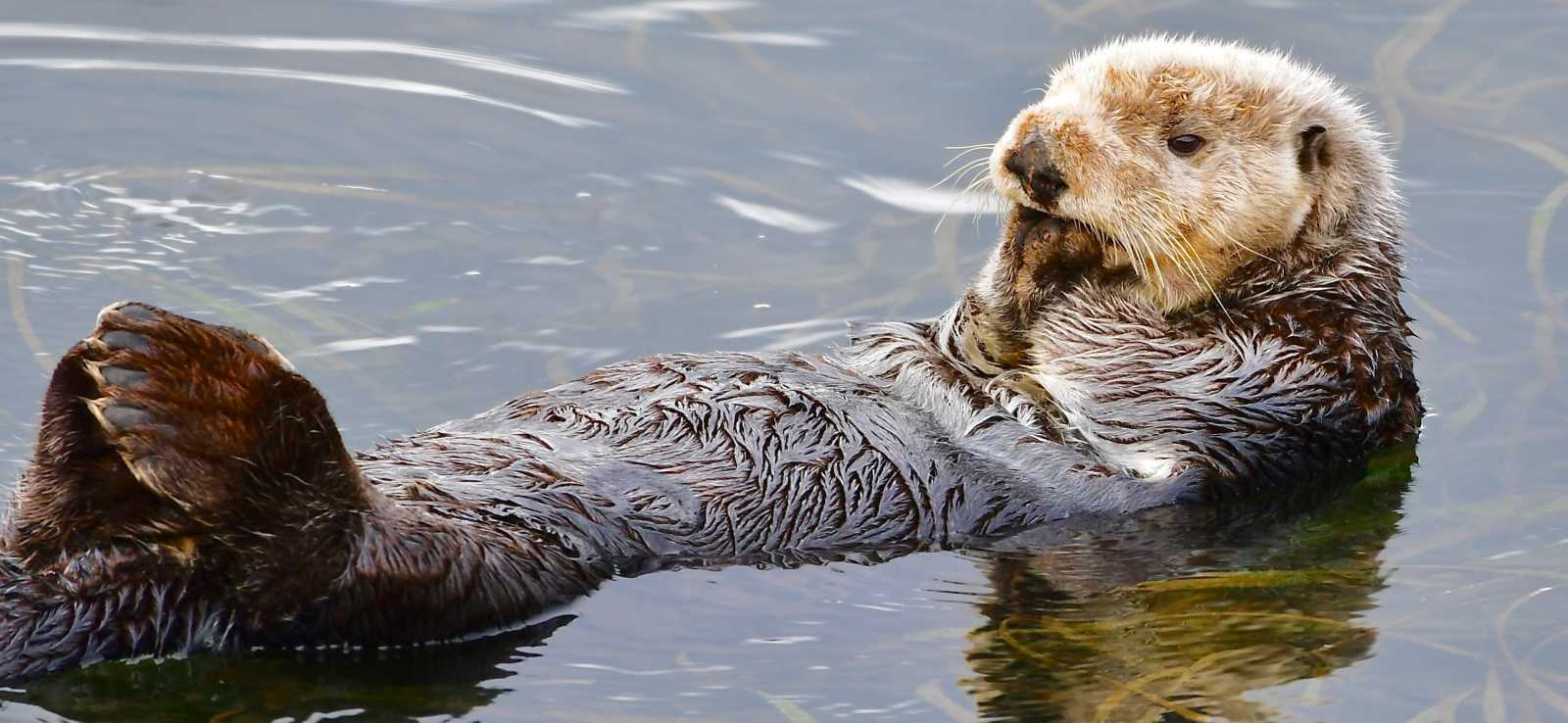Sea otters, the smallest marine mammals in the ocean, possess fascinating adaptations to survive the frigid waters they inhabit. Unlike other marine mammals such as whales, dolphins, and seals that rely on a thick layer of blubber for insulation, sea otters employ a twofold strategy to keep themselves warm. This unique approach, combined with their intriguing behaviors and characteristics, makes sea otters one of the most captivating creatures in the animal kingdom.
The Thickest Fur in the Animal Kingdom
Sea otters boast the thickest fur of any animal on earth, with up to 1 million hairs per square inch. This dense fur acts as the first line of defense against the cold waters. The fur consists of two layers: a dense underfur that traps air and a longer, coarser guard hair that helps to keep the underfur dry. The trapped air in the underfur acts as insulation, keeping the otter warm by maintaining a layer of air close to their skin. This adaptation is crucial for sea otters, as they lack the blubber that other marine mammals rely on.
Leaky Mitochondria:
Despite their incredibly thick fur, sea otters need an additional mechanism to maintain their body temperature in icy waters. This is where their second strategy comes into play: leaky mitochondria. Mitochondria are the powerhouses of cells, converting nutrients from food into energy. In sea otters, however, these mitochondria are "leaky," meaning that a significant portion of the energy produced during this conversion process is lost as heat rather than being used for muscle activity. This dispersed heat helps keep the otters warm but comes at a cost. Due to their inefficient energy production, sea otters need to consume more than 20 percent of their body weight in food every single day to meet their energy demands. This high metabolic rate likely contributes to their small size, as they need to be agile hunters to gather enough food.
Sea otters are not only remarkable for their thermal adaptations but also for their intelligence and use of tools. They are one of the few animal species known to use tools in the wild. Sea otters often use rocks to crack open the hard shells of their favorite prey, such as crabs, clams, and mussels. This behavior demonstrates their problem-solving abilities and adds to their charm. They will even carry their favorite rocks in a loose skin pouch under their forearms, making them accessible whenever a meal needs preparing.
Sea otters are highly social animals. They often form groups, called rafts, which can consist of a few individuals to several dozen otters. These rafts are usually single-sex, with males and females forming separate groups. The social structure of sea otters helps them to cooperate in foraging and provides protection from predators.
Additionally, sea otters are known for their playful behavior. They engage in activities such as somersaults, sliding down slopes, and playing with objects in their environment. This playful nature not only serves as a way to build social bonds but also helps young otters develop essential survival skills.
Sea otters play a crucial role in maintaining the health of kelp forest ecosystems. They are voracious predators of sea urchins, which, if left unchecked, can devastate kelp forests by overgrazing. By keeping sea urchin populations in balance, sea otters help to preserve these underwater forests, which provide habitat and food for a diverse array of marine species. This ecological role highlights the importance of sea otters in their natural habitats and the broader marine environment.
Conservation Status and Efforts
Despite their ecological importance and captivating behaviors, sea otters have faced significant threats due to human activities. Historically, they were hunted to near extinction for their fur. Today, while populations have rebounded in some areas due to conservation efforts, they are still threatened by oil spills, pollution, and habitat loss. Conservationists are working tirelessly to protect sea otters and their habitats, ensuring that these remarkable creatures continue to thrive.
